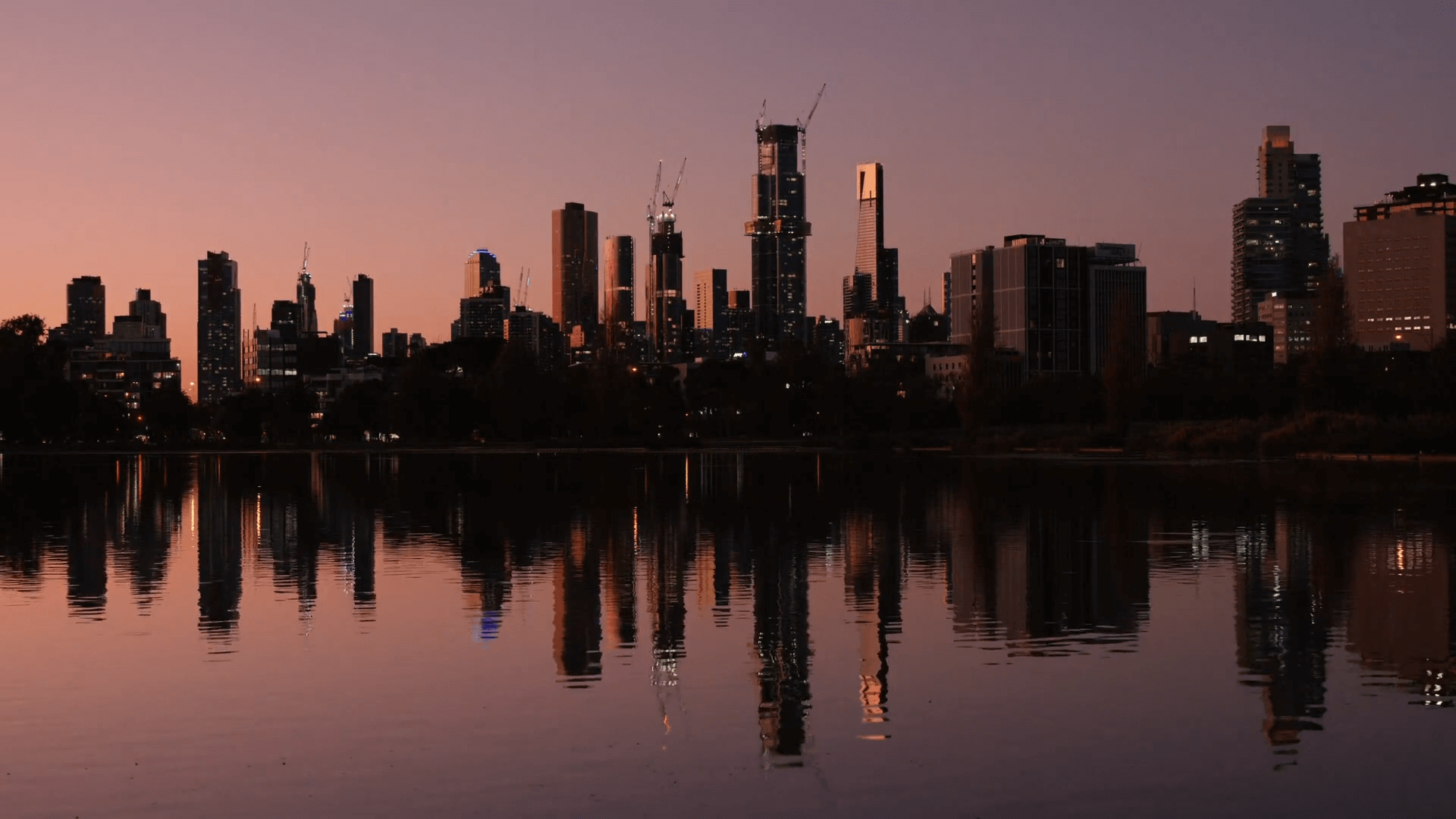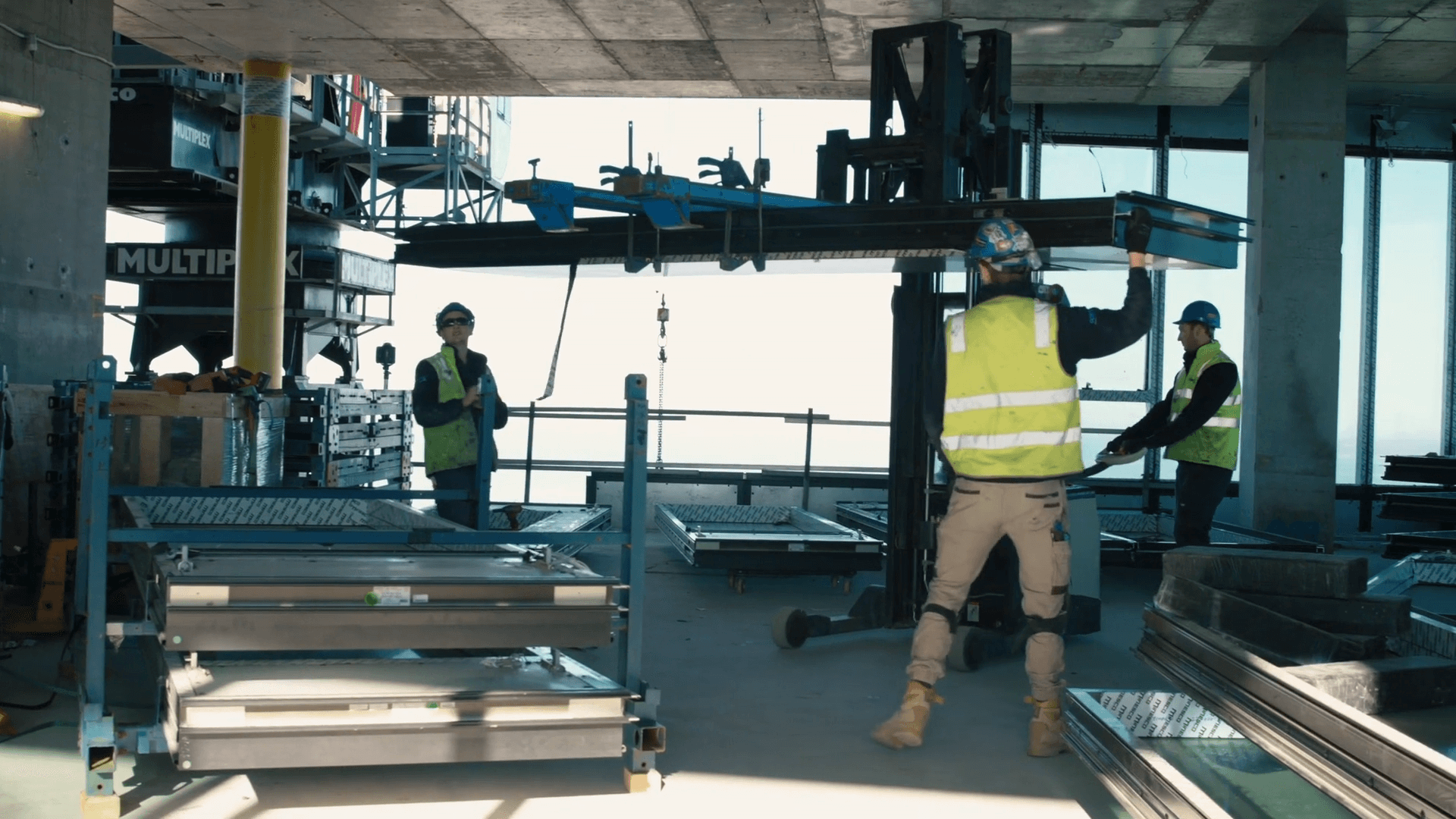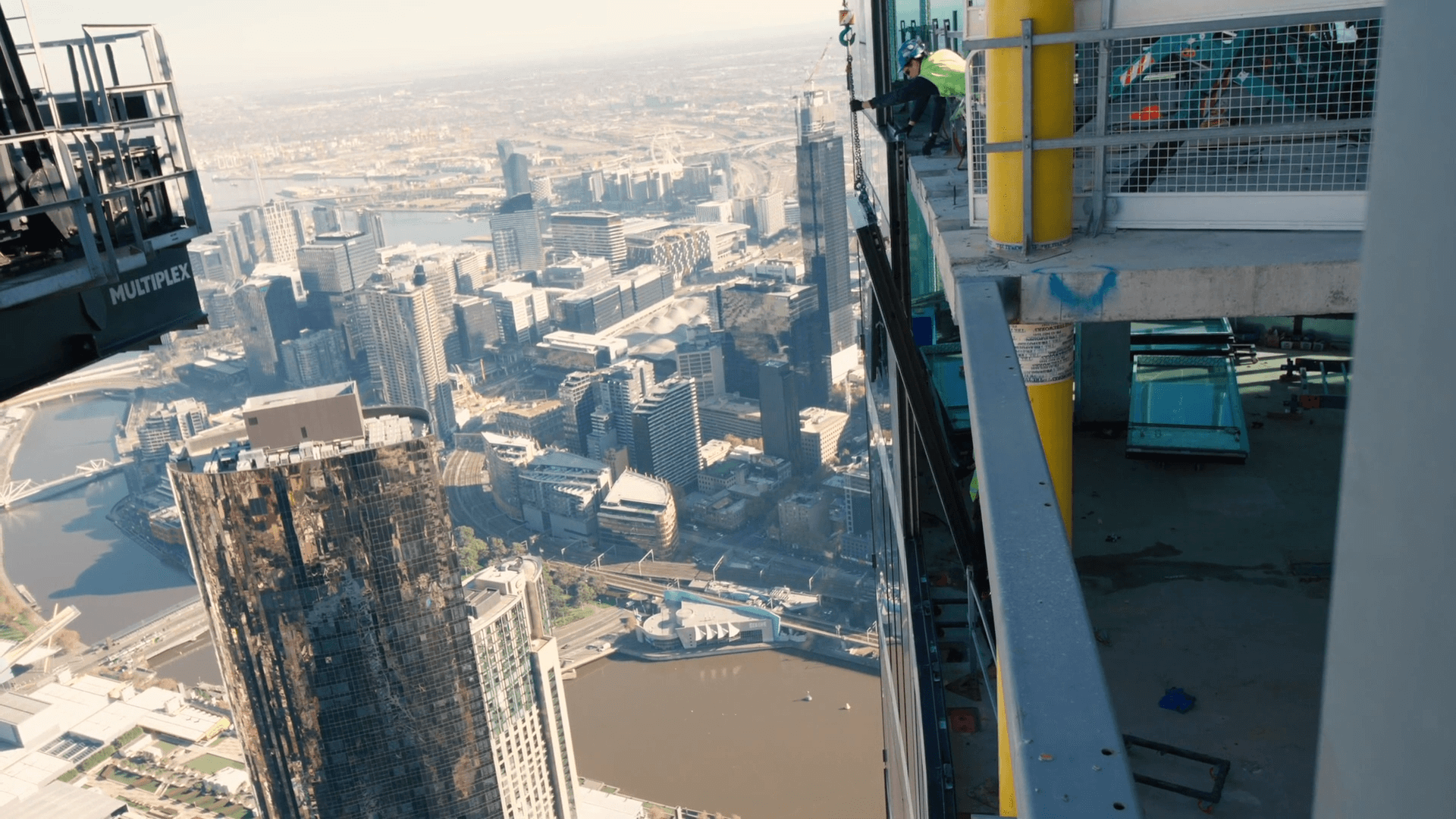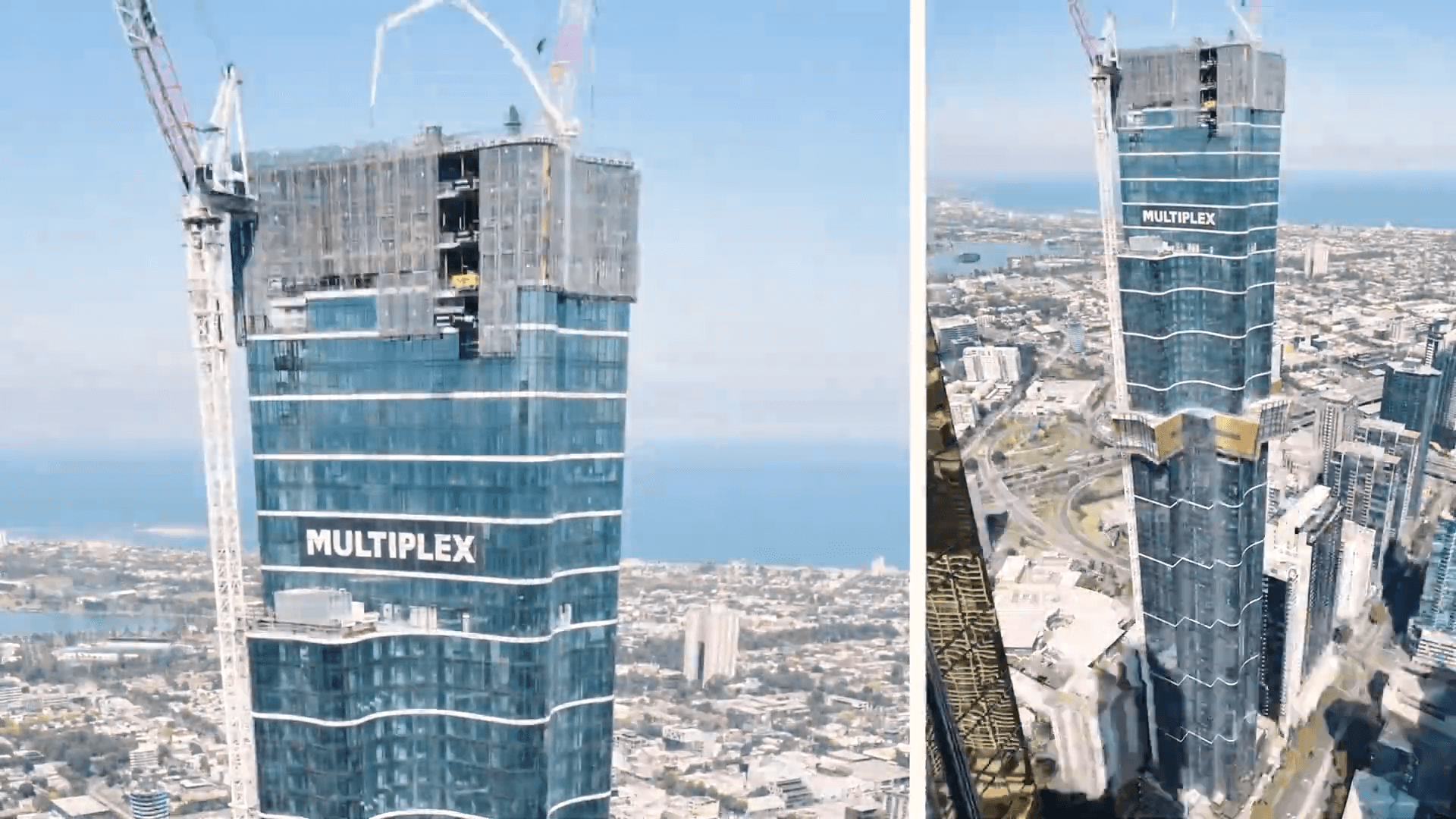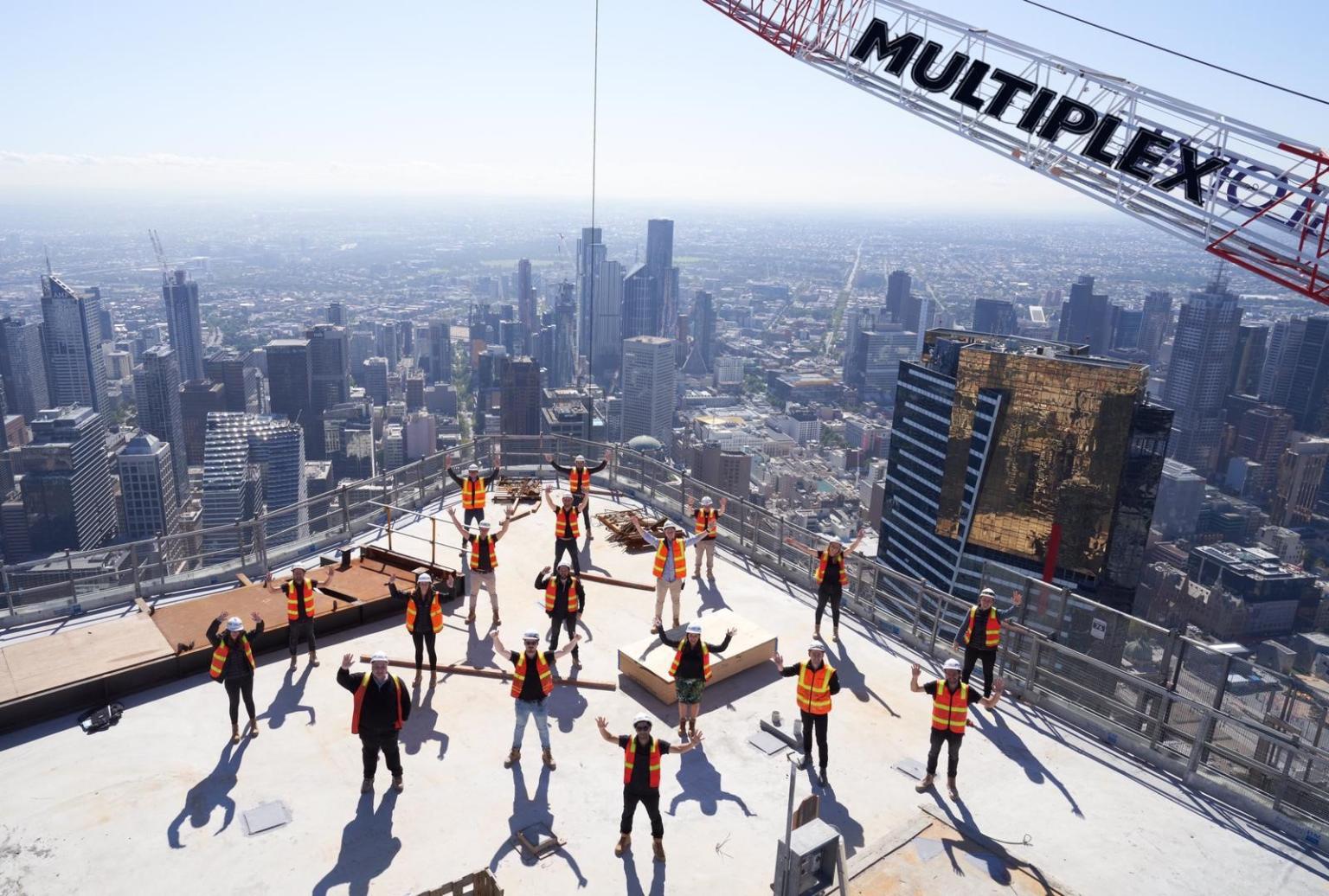“Large Overturning Forces”: How Australia 108 Stays Standing
Australia 108 recently topped out, making it the southern hemisphere’s tallest building by roof height (Gold Coast’s Q1 is taller overall thanks to its spire). The 100-storey residential building is 318.7 metres high, surpassing the Eureka tower by 21.4 metres.
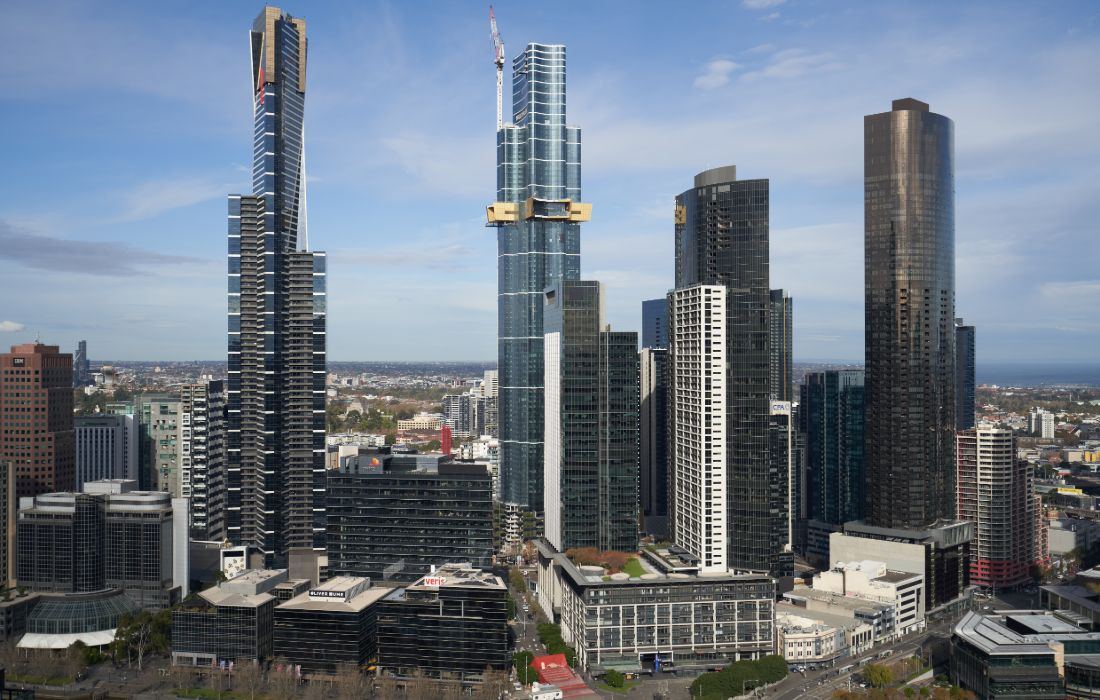
The Chinese businessman that snapped up the penthouse suite will be able to escape the city by jumping in his private elevator. The only thing that’ll obstruct his $25 million view is the clouds.
The record-breaking project was designed by architects Fender Katsalidis with structural engineering by Robert Bird Group. Multiplex is delivering the build, which started in late 2015 for a contract price estimated to be worth around $500 million.
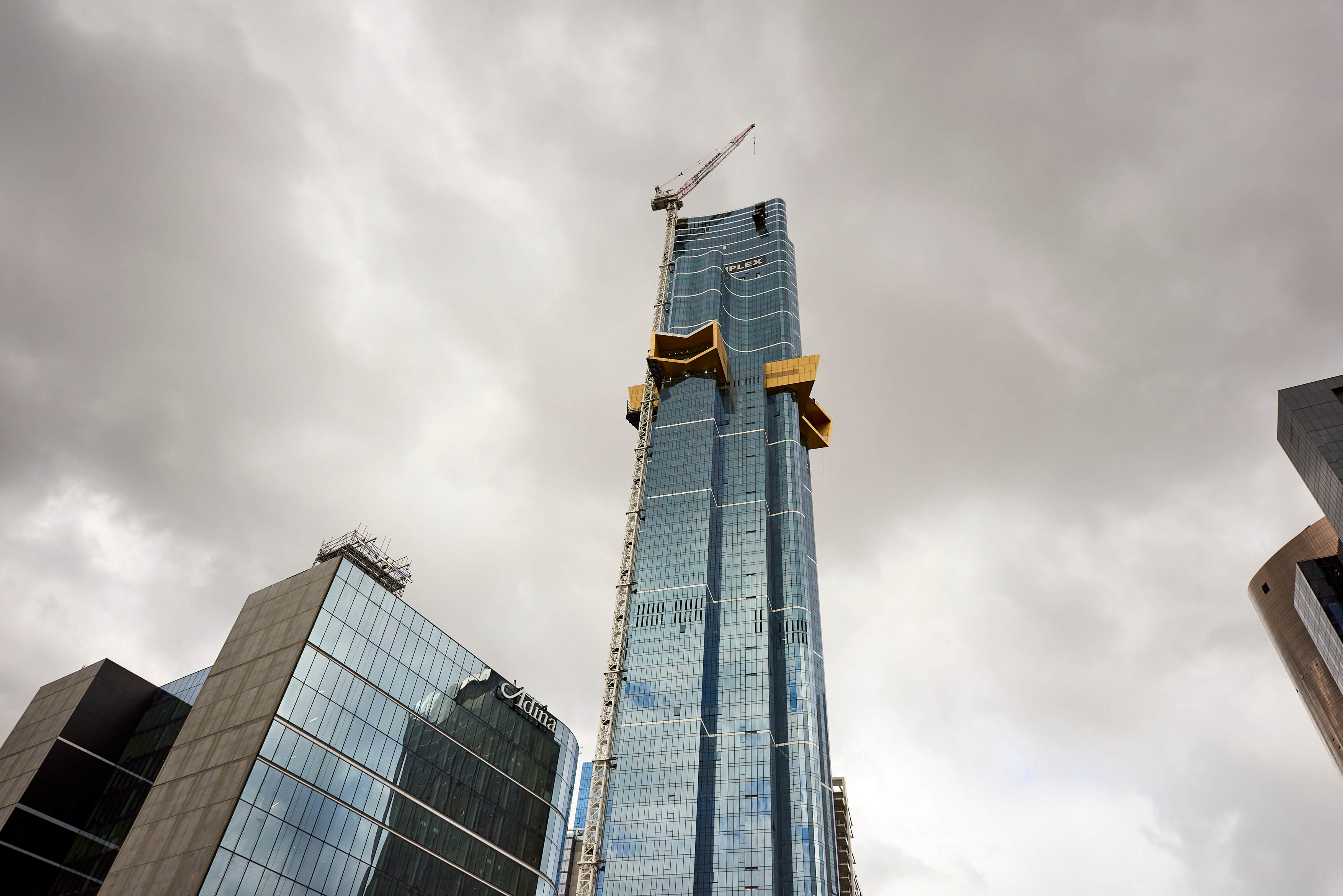
Built on a deposit of Coode Island silt, and with two pools cantilevering 6 metres out, 219 metres above the ground, we wanted to find out how this behemoth stays standing.
Robert Bird Group’s Southern Region General Manager, John Bambino, told This Is Construction that designing Australia’s second tallest building required an unrivalled attention to detail.
“The quality control on this building was second to none,” says Bambino, “every design detail was heavily scrutinised, even if that meant off-site prototyping before implementation on site”.
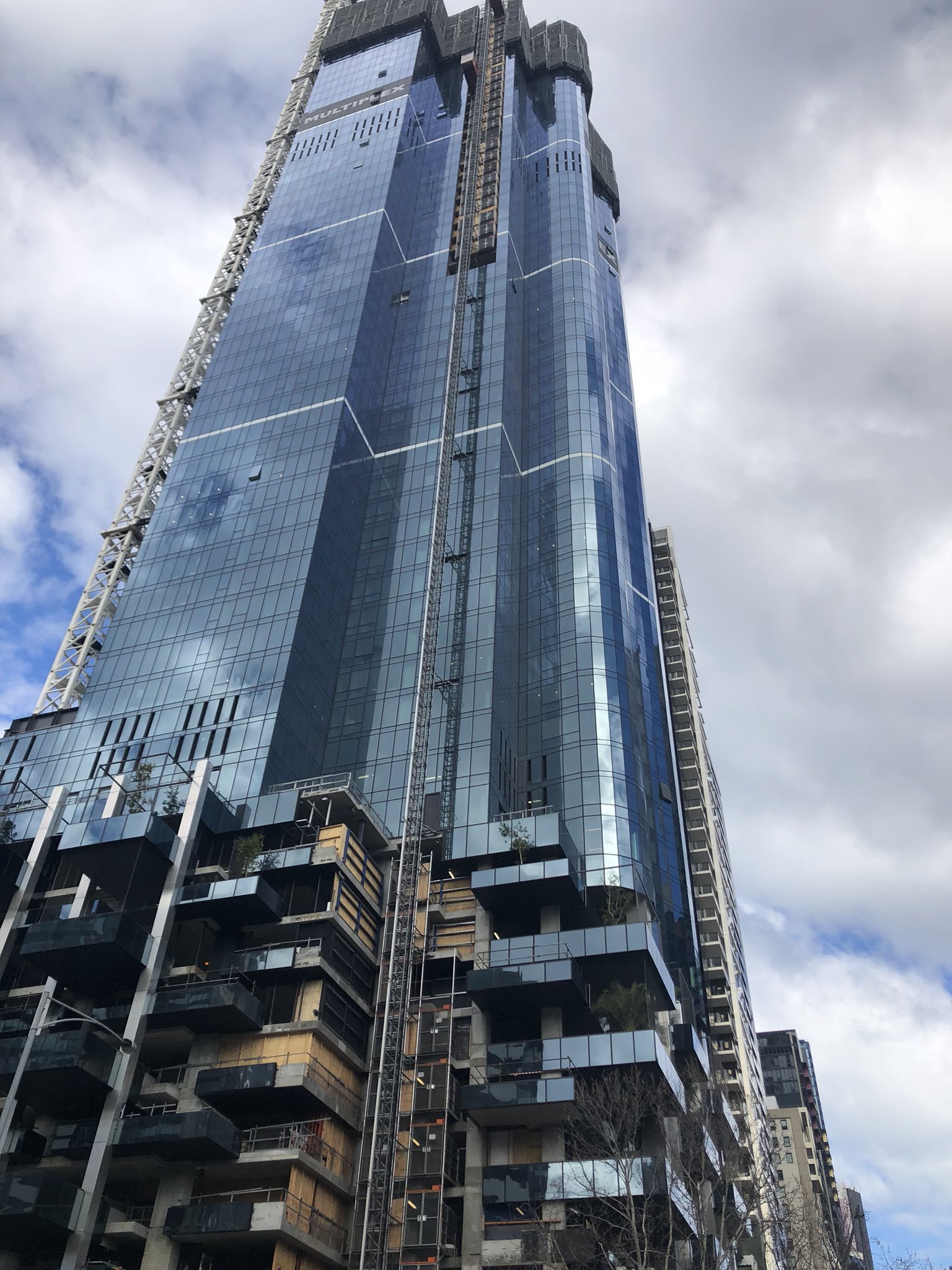
The building was faced with a raft of engineering challenges. Firstly, the difficult Southbank site conditions required the building’s substructure to be modelled and designed with respect to the notorious self-settling Coode Island silt on the site.
To accommodate any movement, drilling would need to be undertaken through the silt to find the bedrock located around 30-35 m below ground.
2.1 m diameter concrete piles were drilled up to 47 m deep, including around 17 m of which is rock socketed, allowing the silt to move underneath the building without any impact on the superstructure.

The piling and capping work alone took 12 months to complete and demanded Australia’s largest piling rig.
The second major challenge for Robert Bird Group and wind engineers, MEL Consultants, was withstanding gale force winds in excess of 140 km/h coming off Port Phillip Bay.
A 300,000 L precast concrete Tuned Liquid Column Damper (TLCD) tank was incorporated in the design between the 98th floor to underside of penthouse level for in-service acceleration control.
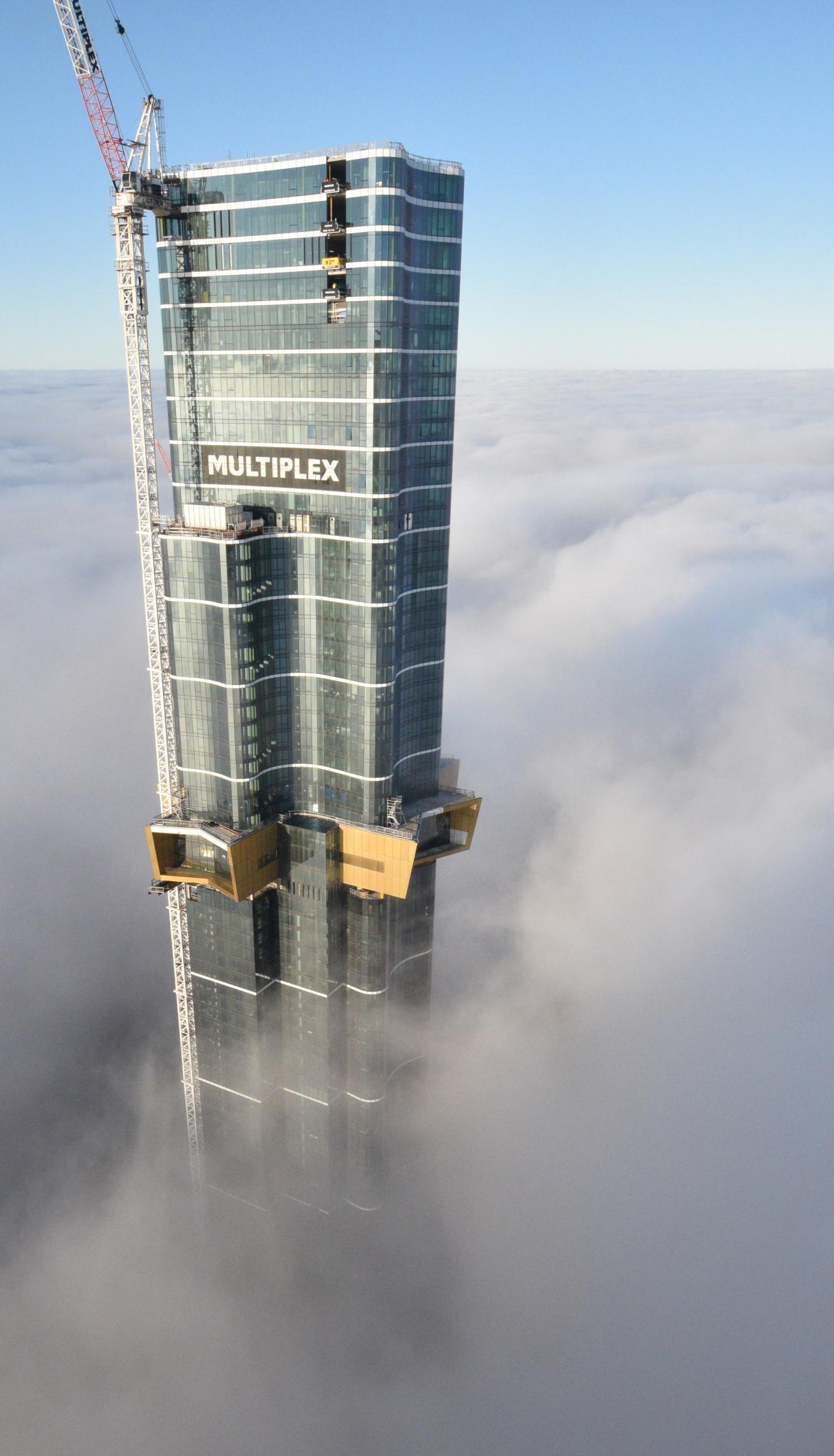
“The building doesn’t rely on the damper tank for structural stability - but it will alleviate some of the 600 mm of sway that the building would experience without it,” says Bambino.
Wind drag is exacerbated by the structure’s distinctive feature: a cantilevered starburst located two thirds of the way up the tower on the 70th floor.
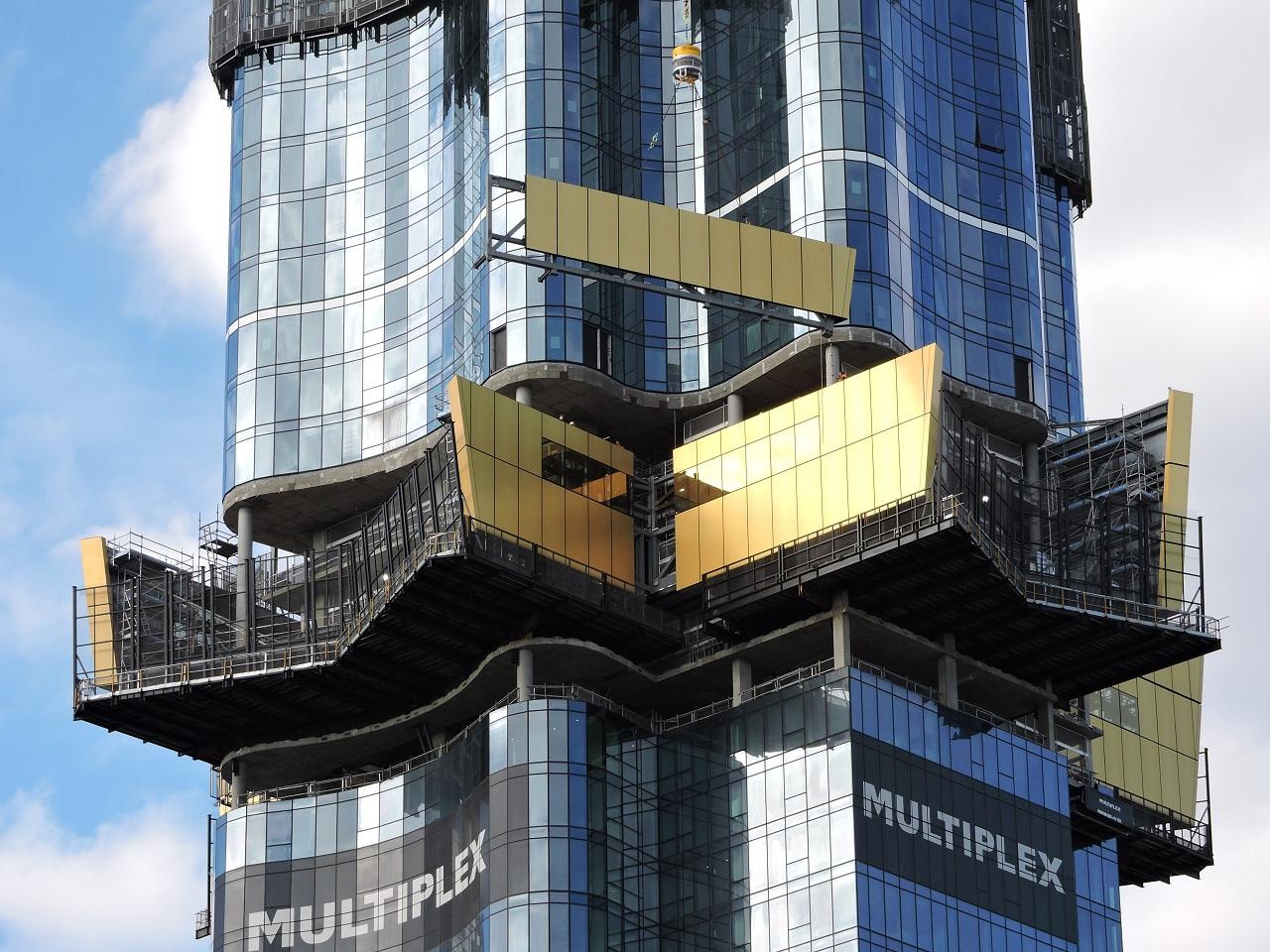
The starburst contains the resident amenities including gym, theatre, library and, just to challenge the engineers even more, two infinity swimming pools sitting on the edge of the 6-metre cantilevers.
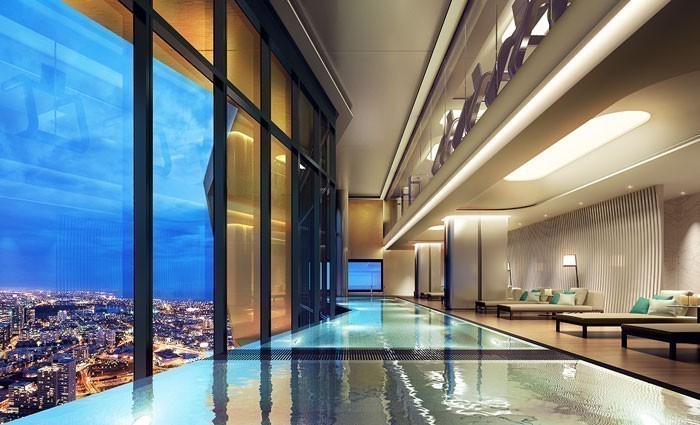
The cantilevering starbursts are each designed as integral systems, consisting predominantly of steel beams and trusses. Composite slabs form the top and bottom of the starburst which are then connected each side by steel trusses. The top slab cantilevers out 8 m - 2 m further than the bottom.
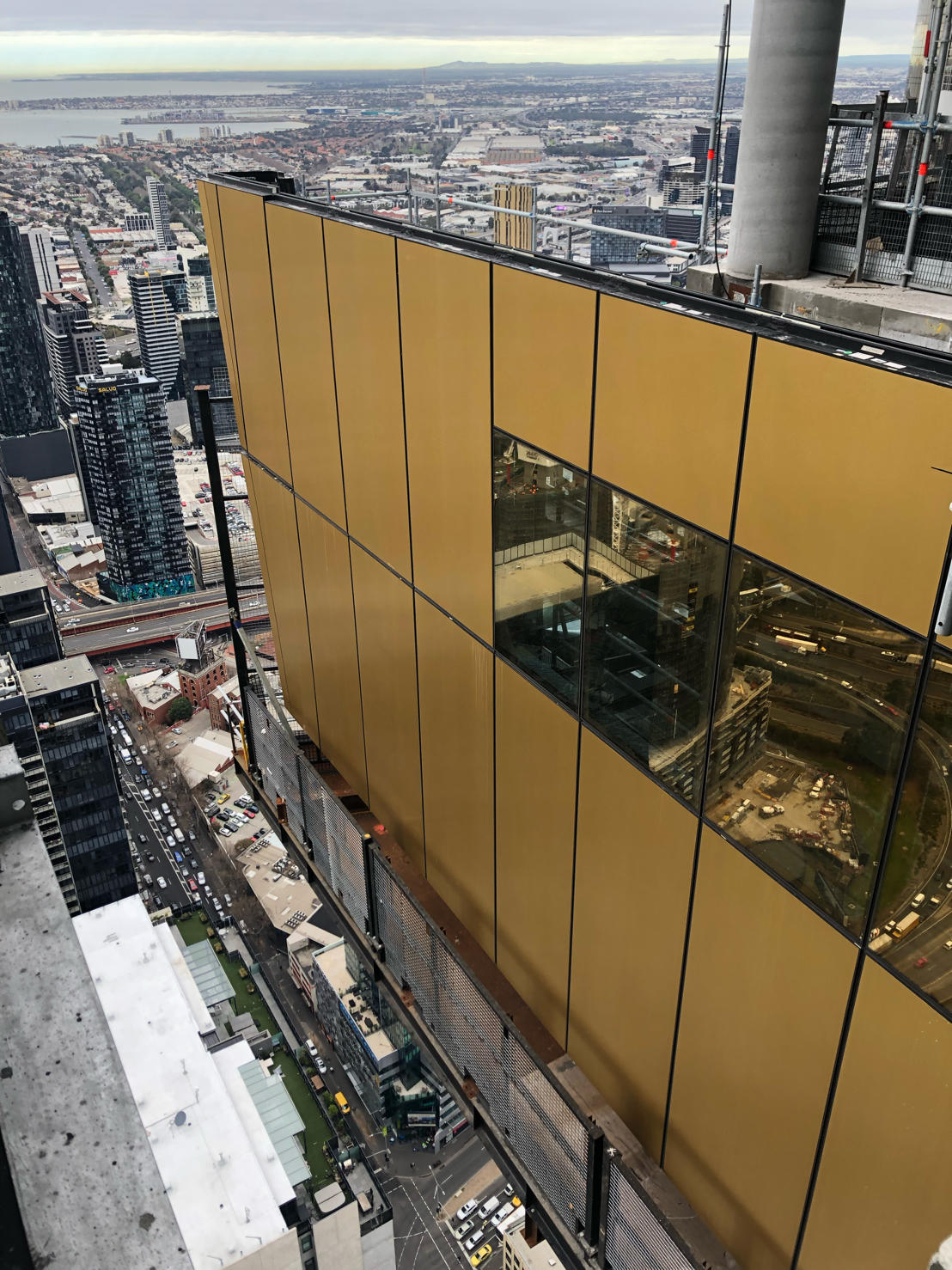
To help accommodate the large overturning forces generated by the wind, the structural system comprises a concrete core with outrigger walls transferring huge lateral loads from the core to mega columns and a mega frame.
“To accommodate such large loads and to minimise the number of floors occupied by the outrigger system, the outrigger walls were designed 900 mm thick with 75 mm diameter Macalloy & DSI bars and custom-made couplers to provide continuity into the core walls. The bars had to be placed millimetre perfect so everything was set in prefabricated templates to prevent errors.”
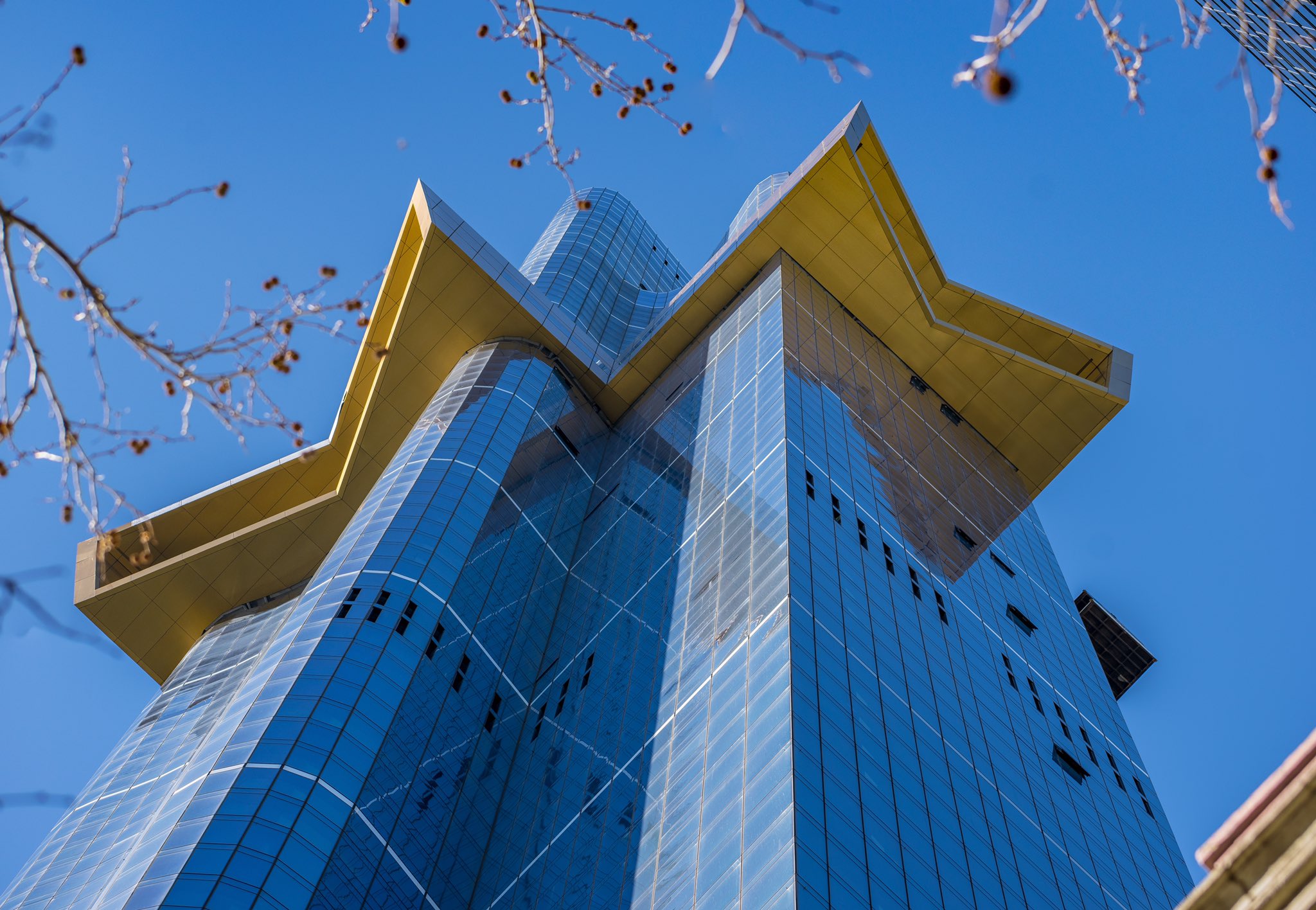
The floors are flat plate two-way post-tensioned plates on a ring pattern of columns and mega columns.
The use of 100 MPa coupled precast columns saved 1 day per floor compared to insitu, and eliminated the need to puddle pour and lap reinforcement. It also meant greater quality control by reducing shrinkage.
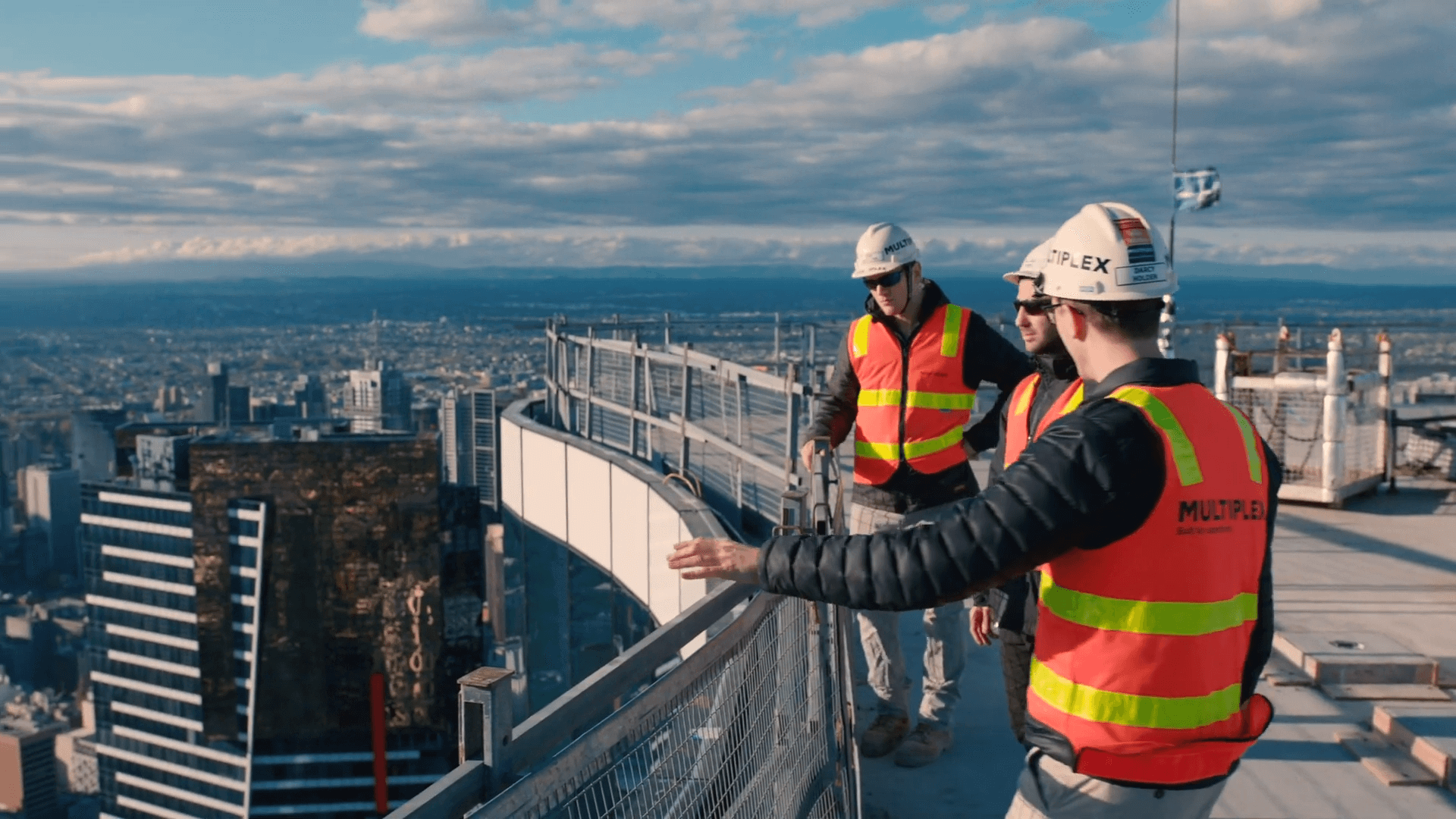
Australia 108 may look effortless as it sits in the Melbourne skyline, but it is truly a feat of modern engineering.
“We were incredibly lucky to have a great collaborative team working on this project, otherwise we probably couldn’t have pulled it off,” laughs Bambino.
.jpeg)
